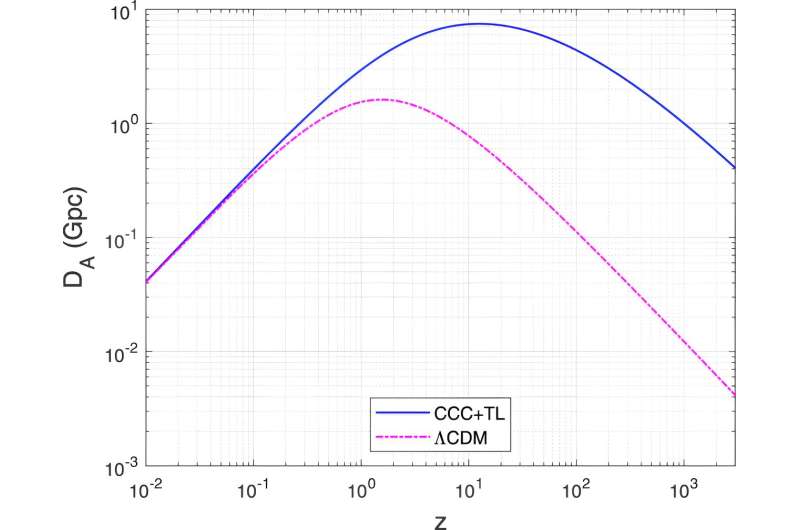2024-10-06 16:24:51
phys.org

The current theoretical model for the composition of the universe is that it’s made of normal matter, dark energy and dark matter. A new University of Ottawa study challenges this.
A study, published today in The Astrophysical Journal, challenges the current model of the universe by showing that, in fact, it has no room for dark matter.
In cosmology, the term “dark matter” describes all that appears not to interact with light or the electromagnetic field, or that can only be explained through gravitational force. We can’t see it, nor do we know what it’s made of, but it helps us understand how galaxies, planets and stars behave.
Rajendra Gupta, a physics professor at the Faculty of Science, used a combination of the covarying coupling constants (CCC) and “tired light” (TL) theories (the CCC+TL model) to reach this conclusion.
This model combines two ideas—about how the forces of nature decrease over cosmic time and about light losing energy when it travels a long distance. It’s been tested and has been shown to match up with several observations, such as about how galaxies are spread out and how light from the early universe has evolved.
This discovery challenges the prevailing understanding of the universe, which suggests that roughly 27% of it is composed of dark matter and less than 5% of ordinary matter, remaining being the dark energy.
Challenging the need for dark matter in the universe
“The study’s findings confirm that our previous work (“JWST early universe observations and ΛCDM cosmology”) about the age of the universe being 26.7 billion years has allowed us to discover that the universe does not require dark matter to exist,” explains Gupta.
“In standard cosmology, the accelerated expansion of the universe is said to be caused by dark energy but is in fact due to the weakening forces of nature as it expands, not due to dark energy.”
“Redshifts” refer to when light is shifted toward the red part of the spectrum. The researcher analyzed data from recent papers on the distribution of galaxies at low redshifts and the angular size of the sound horizon in the literature at high redshift.
“There are several papers that question the existence of dark matter, but mine is the first one, to my knowledge, that eliminates its cosmological existence while being consistent with key cosmological observations that we have had time to confirm,” says Gupta.
By challenging the need for dark matter in the universe and providing evidence for a new cosmological model, this study opens up new avenues for exploring the fundamental properties of the universe.
More information:
Rajendra P. Gupta, Testing CCC+TL Cosmology with Observed Baryon Acoustic Oscillation Features, The Astrophysical Journal (2024). DOI: 10.3847/1538-4357/ad1bc6
Provided by
University of Ottawa
Citation:
New research suggests that our universe has no dark matter (2024, March 15)
retrieved 6 October 2024
from https://phys.org/news/2024-03-universe-dark.html
This document is subject to copyright. Apart from any fair dealing for the purpose of private study or research, no
part may be reproduced without the written permission. The content is provided for information purposes only.
Support Techcratic
If you find value in Techcratic’s insights and articles, consider supporting us with Bitcoin. Your support helps me, as a solo operator, continue delivering high-quality content while managing all the technical aspects, from server maintenance to blog writing, future updates, and improvements. Support Innovation! Thank you.
Bitcoin Address:
bc1qlszw7elx2qahjwvaryh0tkgg8y68enw30gpvge
Please verify this address before sending funds.
Bitcoin QR Code
Simply scan the QR code below to support Techcratic.

Please read the Privacy and Security Disclaimer on how Techcratic handles your support.
Disclaimer: As an Amazon Associate, Techcratic may earn from qualifying purchases.




































![Lost Lands 8: Sand Captivity CE [32] Let's Play walkthrough – Part 32](https://techcratic.com/wp-content/uploads/2024/11/1731477236_maxresdefault-360x180.jpg)


















![Teenage Mutant Ninja Turtles – Season 3, Volume 1: Alien Invasion, Ways of the Warrior [DVD]](https://techcratic.com/wp-content/uploads/2024/11/518165SCXGL-340x180.jpg)











